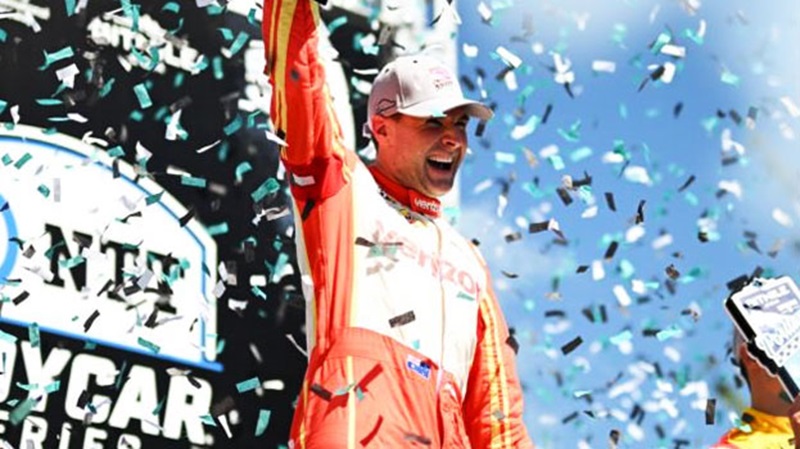Food for Thought: Sato is among INDYCAR's best eaters
AUG 13, 2019
Takuma Sato laughs heartily when asked about how much he eats.
While there is a strong suspicion in the NTT IndyCar Series that pound-for-pound the diminutive Japanese driver can put away more food than anyone else in the paddock, he is not convinced the speculation is true.
“Generally speaking, I think it's normal — I love food, but quantity-wise it's not that massive,” he said. “I eat like a normal person.”
He sported a huge smile as he said that.
“I like anything: Obviously Japanese, Italian, American food like steak is a favorite, French, Korean, you name it I eat it. I eat most stuff,” he said.
Luckily for Sato, his life's first sporting passion helps him stay slim enough to fit in the cockpit of his No. 30 Rahal Letterman Lanigan Honda. The personable 42-year-old began his sporting career as an aspiring cyclist, riding seriously as a youngster and dreaming of glory in another type of road racing.
Interestingly, while his size makes some think he is the paddock eating champion, his small stature turned out to be the factor that determined he'd have a career modulating a throttle rather than muscling a bicycle.
“I am not big so I could climb hills well, but when it came to sprinting and producing power, I couldn't compete with the bigger guys,” said Sato, who insisted that cycling still helps fuel his desire to control any kind of machine and go fast.
“I thought I could be an Olympian at the highest level, but I realized it would be difficult. And my passion always went back to racing, racing, racing.”
At 19, Sato convinced his parents to let him try a racing school in Japan that offered a substantial scholarship to help get the top candidate into a professional series. With the age limit on the scholarship being 20, wining it was the only way he would live his dream.
Sato didn't disappoint and after winning the prize he went on to take home the 2001 British Formula 3 championship and a victory in the challenging Macau Grand Prix in his third year of racing cars. A year later, he was driving for the Jordan team in Formula One. Sato joined the NTT IndyCar Series in 2010.
“It was my last chance, and I got the scholarship,” said Sato, who won the Honda INDYCAR Grand Prix of Alabama earlier this year.
“I appreciate all the people who supported me in my career. I am very fortunate to have been racing professionally for 20 years – I'm proof that even if you start at 20 you can still make it and still be doing it.”
Although cars and wheels still attract him, Sato also has an eye for architecture, especially the engineering aspect. While he only dabbles in it, the 2017 Indianapolis 500 champion enjoys gettting involved in any changes to his living spaces that incorporate design. That includes his kitchen where he would like to be better at cooking but simply doesn't have the time to learn the craft.
“Cooking is fun, but it is so time consuming,” he said. “For me, I think it's just a question of not being able to create variety — I don't think I have got it, so I really have a lot of respect for chefs. I have good friends who are chefs who I get on really well with. I love them.”
And with his more than two decades in racing likely coming to an end in the near future, Sato may soon begin to think about what to do next after hangs up the gloves for good.
Maybe when he has the right amount of time to devote to food, could cooking be a second career, he's asked.
“Me? A chef? No,” he replied before grinning widely and adding: “I'm a professional eater.”
Next up for the NTT IndyCar Series is Sunday's race at Pocono (Pa.) Raceway. The ABC Supply 500 is the first of four races to close the 2019 season. NBCSN will have the television coverage at 2 p.m. ET (green flag at 2:45 p.m. ET). The Advance Auto Parts INDYCAR Radio Network provides the radio call, with coverage on SiriusXM Radio (XM 209, Sirius 98, Internet/App 970). Qualifying is Saturday at 12:30 p.m. (delayed on NBCSN until 2:30 p.m.).

























